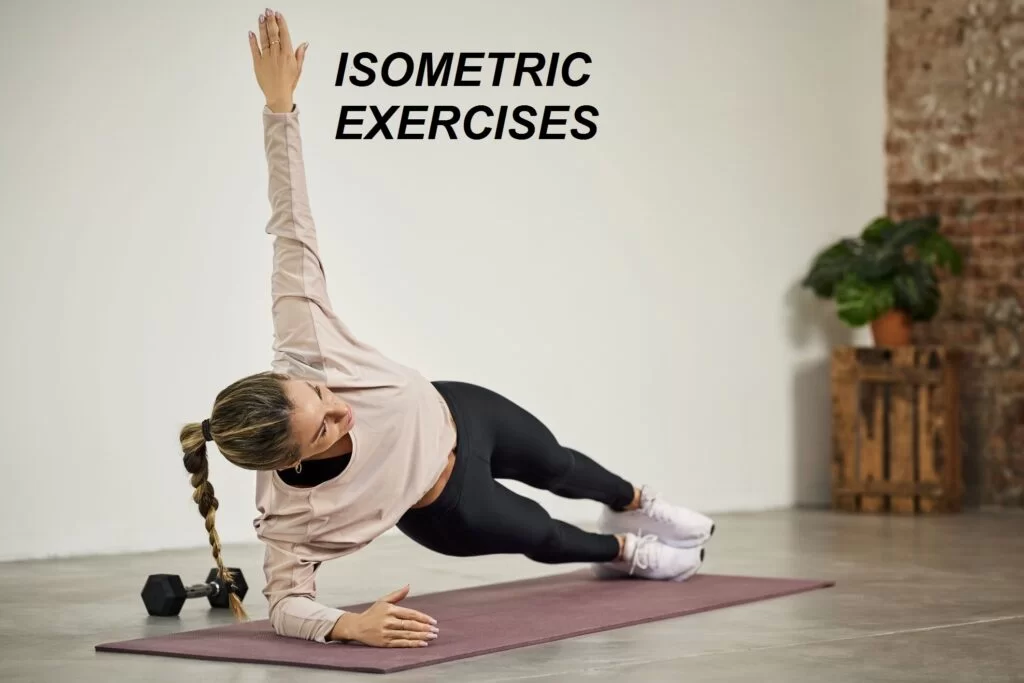The Benefits of Isometric Exercises in Physiotherapy
Isometric exercises in physiotherapy help improve muscle strength, stability, and pain management without joint movement, making them ideal for injury recovery and chronic pain relief. These exercises promote safe muscle engagement, enhance posture, and support joint stability.

Isometric exercises are a type of strength training that involves muscle engagement without any visible movement of the joint. These exercises are widely used in physiotherapy for patients recovering from injuries, managing chronic conditions, and improving overall strength and stability. Unlike dynamic exercises that involve movement and flexion, isometric exercises require the muscle to hold a position against resistance, making them ideal for both beginners and those at advanced levels of recovery. This article explores how isometric exercises are implemented in physiotherapy and their numerous benefits for patients.
What Are Isometric Exercises?

Isometric exercises involve holding a static position with the muscles contracted without changing the length of the muscle or the position of the joint. For example, pushing against a wall, holding a plank, or squeezing a pillow between the knees are all forms of isometric exercises. Because they involve minimal movement, isometric exercises reduce strain on injured joints and are often an effective first step in rehabilitation programs.
Types of Isometric Exercises
-
Overcoming Isometrics: This type involves pushing or pulling against an immovable object, such as pressing against a wall. These exercises increase muscle strength and are commonly used to activate muscles in safe, controlled conditions.
-
Yielding Isometrics: Here, the person holds a specific position against a force, such as in a plank, squat hold, or wall sit. Yielding isometrics are beneficial for building endurance and stability.
Key Benefits of Isometric Exercises in Physiotherapy
1. Safe Muscle Engagement for Injury Recovery
For individuals recovering from injuries or surgeries, joint movement may be restricted, making traditional strength exercises challenging. Isometric exercises enable safe muscle engagement without stressing the injured area. This approach helps strengthen surrounding muscles and prevent further weakening during the recovery phase.
- Example: In patients with knee injuries, a simple isometric quad set—contracting the thigh muscles without bending the knee—can help prevent muscle atrophy and promote stability.
2. Improved Muscle Strength and Endurance
Isometric exercises effectively improve muscle strength by focusing on prolonged contraction. Holding a muscle contraction without movement trains the muscle to maintain tension, enhancing both strength and endurance over time. By consistently challenging muscles to remain activated, patients can build a solid foundation before progressing to more dynamic exercises.
- Example: Holding a wall sit for gradually longer intervals builds strength and endurance in the quadriceps, making it a useful exercise for knee rehabilitation.
3. Increased Stability and Joint Support
Isometric exercises focus on stabilizing muscle groups around the joints, providing enhanced support and preventing excessive joint movement. Stability is essential, especially for patients with conditions like arthritis, where joint movement may be painful. Isometric exercises help stabilize the joint by activating the surrounding muscles, which can alleviate strain on the affected area.
- Example: An isometric shoulder hold strengthens the muscles surrounding the shoulder joint, helping stabilize the joint for individuals with shoulder injuries or conditions like rotator cuff injuries.
4. Effective for Pain Management
Isometric exercises are proven to help reduce pain by encouraging blood flow and promoting muscle activation without exacerbating joint pain. Holding a muscle contraction releases endorphins, which can help alleviate discomfort in the affected area, making it an effective tool for those with chronic pain conditions.
- Example: Patients with lower back pain can benefit from isometric core exercises, like the plank, which engage the abdominal muscles and provide spinal support without straining the back.
5. Low-Impact Exercise for All Ages and Fitness Levels
The low-impact nature of isometric exercises makes them suitable for a wide range of individuals, including the elderly, those new to exercise, and patients with physical limitations. Since isometric exercises don’t involve rapid joint movement, they present a lower risk of injury, and the intensity can be adjusted to suit each individual's capabilities and goals.
- Example: Older adults can engage in isometric exercises like seated knee squeezes, where a pillow is held between the knees, to safely strengthen leg muscles and improve joint stability.
6. Improved Posture and Core Strength
Isometric exercises, especially core-focused ones, promote good posture by strengthening the muscles that support the spine and abdomen. Exercises like planks and side holds target the deep core muscles, which play a vital role in maintaining alignment and posture. Improved core strength helps prevent lower back pain and improves balance, which is essential for daily activities and mobility.
- Example: The plank is a widely used isometric exercise that engages the entire core, enhancing stability and reducing strain on the spine.
Isometric Exercises Commonly Used in Physiotherapy
1. Plank
The plank targets the core muscles and strengthens the abdominal and lower back muscles, which support proper posture and spinal alignment. It’s highly versatile, with variations that can be modified based on strength level, making it a cornerstone in many physiotherapy programs.
2. Wall Sit
This lower-body isometric exercise strengthens the quadriceps, hamstrings, and glutes. It is ideal for patients recovering from knee injuries, as it helps develop leg strength and endurance without requiring bending or dynamic movement.
3. Isometric Shoulder Hold
Isometric shoulder holds involve holding the arms at a specific angle, either out to the sides or in front of the body, engaging the deltoid and upper back muscles. This exercise builds shoulder stability and is beneficial for patients with shoulder injuries or limited range of motion.
4. Glute Bridge Hold
The glute bridge hold activates the gluteal and hamstring muscles. By holding the hips elevated, patients can strengthen the muscles supporting the pelvis, which is essential for spinal stability and posture.
5. Isometric Hip Adduction and Abduction
These exercises involve squeezing or pushing against resistance, such as a pillow or band, with the thighs. Adduction and abduction exercises target the inner and outer thigh muscles, supporting hip alignment and joint stability, which are essential for gait and balance.
Who Can Benefit from Isometric Exercises in Physiotherapy?

Isometric exercises are suitable for various patient populations due to their adaptability and low-impact nature. Some groups who particularly benefit include:
- Post-Surgery Patients: Isometric exercises offer a safe, effective way to maintain muscle engagement without putting stress on healing incisions or surgical sites.
- Individuals with Arthritis: Because these exercises don’t involve repetitive movement, they are ideal for patients with arthritis who may experience discomfort during high-impact activities.
- Elderly Adults: Due to their reduced risk of injury, isometric exercises help older adults maintain muscle strength, improve balance, and reduce the likelihood of falls.
- People with Joint Pain: Since isometric exercises don’t involve joint flexion or extension, they provide an effective way to build strength without aggravating joint pain.
Conclusion
Isometric exercises are an invaluable component of physiotherapy, offering a safe, low-impact way to engage muscles, build strength, and support joint stability. From injury recovery to pain management, these exercises can be tailored to meet various physical needs and limitations, making them versatile tools in the hands of physiotherapists. Whether helping with core strength, posture, or joint stability, isometric exercises bring multiple benefits that support patients in regaining function, managing pain, and achieving long-term improvements in physical health.
Download this app and Connect with best physiotherapy clinic in jaipur












